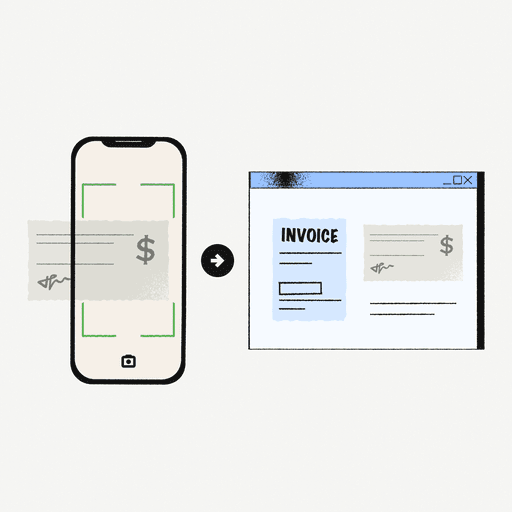
How AI is Leading Accounts Receivable’s Digital Transformation
- 10 min read
This article looks at 4 core artificial intelligence trends in accounts receivable trends, alongside the issues companies must account for before fully adopting AI in their AR workflows.
Read on to learn how AI is (and will) transforming accounts receivable.

Key takeaways
AI is rapidly changing several finance functions, including accounts receivable (AR). Above all else, it will make AR more human.
AI and ML can help AR teams recognize and apply cash faster, boosting cash flow. This gives AR more time to address customer issues and delight them.
Instead of merely automating rote tasks, AI will act as a transformation layer between legacy finance systems. This reduces infrastructure costs and extends system life.
CFOs can expect business insights from every business unit, thanks to AI. Chat-like interfaces will deliver insights ad-hoc and demystify customer needs.
CFOs and their AR teams must collaborate with CISOs to understand data security, accuracy, and privacy concerns before fully adopting AI in their workflows.
—
Artificial intelligence (AI) is seemingly everywhere these days. Every business function is adopting it, and AI is set to transform our world. But what impact will AI have on accounts receivable (AR) for mid-market enterprises?
We asked Doug Hathaway, our VP of Engineering, for his thoughts. Doug previously co-founded DadeSystems, an AI-driven cash application platform, making him our go-to AI expert.
"AI can transform AR and make it ‘more human’ by removing much of the legwork needed to apply payments," he says. "When this happens, it’s more engaging, you can access more data, making it less mundane."
Below are four other AI for AR trends, according to Doug, alongside the issues companies must account for before adopting artificial intelligence.
4 AI trends in accounts receivable
The four trends below will impact AR in significant ways—whether by boosting cash flow or driving better CX. Here they are:
Trend 1: AI will help you recognize cash faster
The first application of artificial reality in AR is already a reality—it’s just one that not many businesses are aware of or adopted. AI-driven optical character recognition (OCR) engines are reducing time spent on cash application by 75%.
These AI engines recognize characters on receipts and remittance records, match them to outstanding invoices, apply cash, and generate accounting journal entries. The result is an efficient cash application process that needs minimal human input.
More importantly, such automation eliminates human errors prevalent in clerical tasks. AI doesn't suffer from fatigue and can run at any hour, ensuring you get cash on your books faster.
This might seem like a threat to your employees, but AI gives your AR team more time to focus on value-added tasks. This is what Doug means when he says, "AI will make AR more human."
"Consider what constitutes the heart of great CX (customer experience)," he says. "Great CX is simple at its core—it involves presenting a human face to your customers. AI helps an AR team focus on solving complex customer issues that require empathy, imagination, and creativity, while AI handles document-heavy and time-consuming manual tasks like cash application."
Whether cost reduction or enabling great CX,AI-driven cash application creates more efficiency in accounts receivable.
Trend 2: AI will tie your financial infrastructure together
Every CFO understands the need to modernize infrastructure. However, the cost of modernization can seem prohibitive, forcing companies to stick with legacy ERP systems.
Doug notes that artificial intelligence can solve this issue. "A key trend to watch for is using AI as a layer between systems," he says, "and even between people and your payment data, as a new, more efficient way of getting the answers you want. This avoids the need for wholesale replacement of an old ERP—instead, layering AI with the old systems can still make it 10 times faster or better."
This AI-as-a-layer approach delivers the following benefits:
AI can automate data transformation, helping your new and old systems talk to each other effortlessly.
The AI layer removes data silos, giving your accounts receivable team visibility into cash flow sources and customer data.
The layer saves you money by extending the life of your legacy ERP.
You can gather data from your ERP and use your AI layer to consolidate, transform, and load data from different sources onto analytics platforms. These platforms (which will also be AI-driven, if they’re not yet already) can help you proactively model business scenarios, giving you a real-time view of business performance.
But perhaps most importantly, AI will link your financial infrastructure silos in the background, eliminating those barriers and making sure your systems talk to each other.
Trend 3: AI will democratize analytics
AI layers can do much more than connect your legacy systems—they can also offer an intuitive interface for analytics in your organization.
"When you’re looking for information, you usually have a specific question, and you’re turning to charts and graphs looking for answers," Doug says. "AI will allow you to skip that middle layer of charts and graphs—you can just ask it the questions you’re looking for, very specifically, and it will be able to formulate a response."
Doug feels ChatGPT-like conversational interfaces will soon extend to AR workflows, where teams can write queries in everyday language and parse data intuitively.
Given the ease of such access, everyone in the organization can mine data for insights, leading to the democratization of analytics. Some CFOs might balk at the thought of non-financial users mining financial data for insights, but such mining only enhances collaboration.
AI will align every portion of the organization around customer issues and company goals, giving AR unique perspectives from multiple business units. This alignment is the key to delivering great CX.
Trend 4: AI will help you get to know your customers better
According to our research, CFOs believe CX improvements are the best yardstick for software purchases. And what better way to power your customers’ experiences than with artificial intelligence?
Predictive AR analytics are not a reality yet, but their potential is highly promising. AI can crunch customer payment history data and predict the likelihood of invoice payment. It can automate payment reminders based on those probabilities to reduce the odds of a past-due invoice—all while maintaining the strength of the customer relationship.
Here are a few other ways AI can help your AR team deliver better CX:
AI can evaluate credit applications instantly and give your customers reasons behind an approval or rejection.
Based on AR aging data, AI can suggest optimal credit terms to your sales team, aligning your cash flow needs with sales goals.
AI can proactively screen new customer onboarding documents, and suggest customers you can offer credit to before they’ve made any formal requests. This shows empathy toward your customers, driving stronger relationships in the long run.
3 issues to address before adopting AI for accounts receivable
While adopting AI holds plenty of promise for accounts receivable and finance teams, doing so comes with some challenges. Here are a few critical issues Doug believes you must handle before adopting artificial intelligence when transforming your AR:
Issue 1: Training data quality
Issue 2: Data privacy
Issue 3: Data security
Issue 1: Training data quality
The quality of AI's output relies on the data you feed it, and the presence of biases in training data will lead to faulty AI output. Before deploying AI, review your datasets for context to unearth any biases that could skew conclusions. Some ways of doing this are:
Verify whether your data sets are complete. Incomplete data will lack a rounded context and skew conclusions.
Scrub your data sets off labels like sex, marital status, age, ethnicity, etc, that could skew results. Note that this method could create additional issues if you use those labels as inputs in your decisions.
Model results across sub-populations of your data to verify whether results are similar across all of them.
Refer to resources like Google’s Responsible AI Practices to audit whether your ML models are delivering fair results.
Another way to mitigate bias risk is to have a human review complex output before approving it. AI can only function when it has all the data it needs to make a decision. Situations that fall outside its defined use case set (called edge cases) need human intervention.
For instance, Versapay’s AI-powered cash application automates the process 90% of the time. However, when an edge case arises, you can create a custom workflow to have a human review the case. Thanks to automation relieving them of routine processing, they can take the time to solve the issue quickly.
Issue 2: Data privacy
"A big challenge for the future is," Doug says, "taking advantage of some advancements in AI while still providing the same level of security and privacy that you have with internally developed platforms."
You can use one of several existing AI models, but most of them rely on open-source code. With these solutions, your data is not private. OpenAI, the company behind ChatGPT, is experiencing a wave of lawsuits over its data-handling practices, for example.
CFOs must collaborate with CIOs and CISOs to understand the technical implications of adopting AI. By working together, you can define data collection, handling, and governance practices that keep you compliant.
Issue 3: Data security
Aside from privacy, Doug identified security as the other major risk for corporations adopting AI. Artificial intelligence needs data to be efficient, but don't be in a rush to collect mountains of it. You’re responsible for securing all the data you collect. Fail to do this and you’ll create significant business risks.
For instance, if you suffer a data breach due to poor cybersecurity, you’ll have to deal with regulatory fines and a negative brand perception amongst your customers.
Security is usually a non-core competency for most SMBs, and AI adoption could result in massive cost increases due to enhanced security needs. Collaboration between CFOs, CIOs, and CISOs is critical to managing costs and maintaining security.
Here’s an example of how our customers’ Tirehub and Starlims unlocked higher AR efficiency thanks to CFO and CIO collaboration in their companies.
—
"Every week, there’s a new AI technology that comes out," Doug notes. "Will all of those be around in 10 years? No—but the ones that solve real problems will still be around, which will evolve as this hype continues or intensifies."
Forward-thinking companies will embrace the potential AI has to transform accounts receivable. From giving AR more time to handle critical disputes to extending the life of legacy applications, AI is much more than a rote-task-automation engine.
The best way to implement AI in your workflows is to partner with vendors who understand AI trends deeply and work with it daily. Cash application is a great place to begin your AI adoption journey. Learn how AI-powered cash application reduces errors and gets cash faster on your books.
About the author

Vivek Shankar
Vivek Shankar specializes in content for fintech and financial services companies. He has a Bachelor's degree in Mechanical Engineering from Ohio State University and previously worked in the financial services sector for JP Morgan Chase, Royal Bank of Scotland, and Freddie Mac. Vivek also covers the institutional FX markets for trade publications eForex and FX Algo News. Check out his LinkedIn profile.


